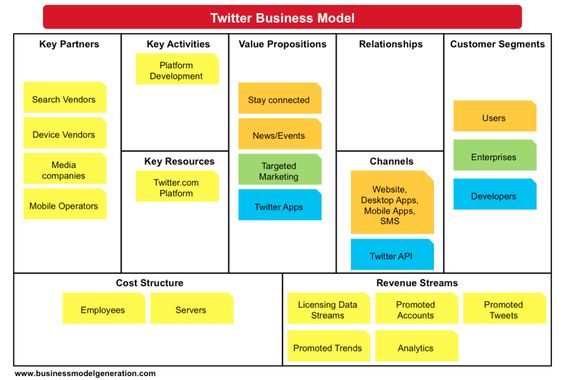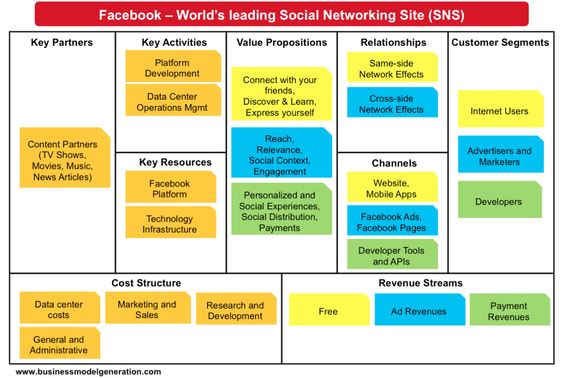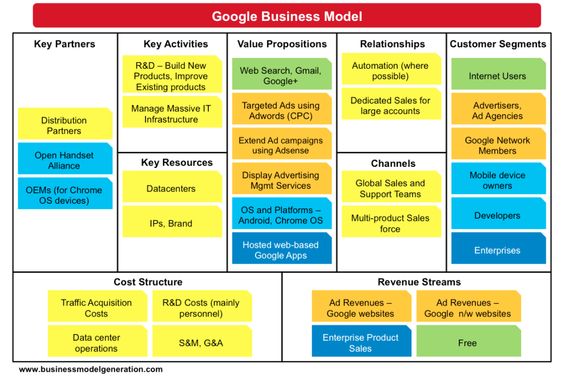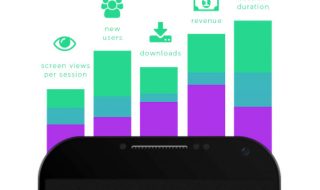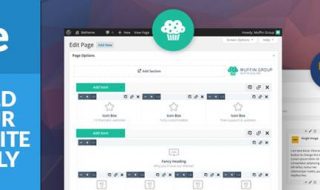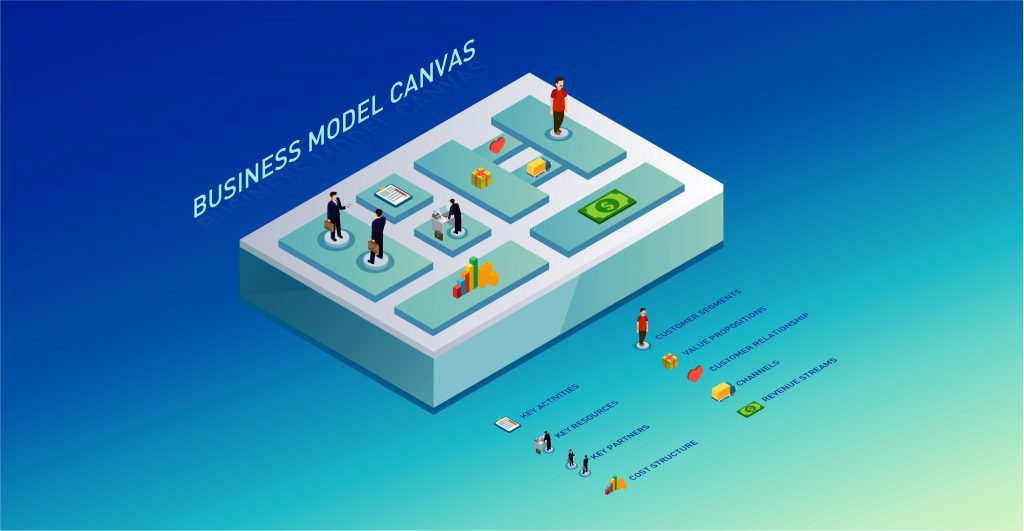
Turning your plans, ambitions and business ideas into a great software solution, you may have overlooked a vital element of the entire process. Business model canvas development belongs to the top tasks each business owners should deal with on their way to successful app production. Ignoring this step, you risk a lot: a well-thought business plan is your chance to forecast your app’s future, predict possible issues or uprising challenges, and develop a strategy on how to avoid them.
This is why we decided to draw your attention business plan canvas importance and answer the following questions:
- What is it?
- Why do you need a business model canvas for app development?
- What are the elements of a canvas?
- How do the most popular businesses design their canvases?
Let’s dive into the depth of this newsworthy topic!
1. What is the business model canvas?
Business model canvas is a description of your vision of a product’s development, including the information about sources of financial revenue, a picture of your target audience and product’s features.
Long story short, it is a table describing how key drivers of your business will fit together. Unlike a traditional extended business plan, it is built in a simple, clear and laconic way. Business model canvas allows easily capture, perceive and analyze needed information.
Perfect business model canvas development demands only several minutes of your time and a sheet of paper. Of course, a deep understanding of a software app specifics is required, too. Our guide will explain how to build it.
2. Why do you need a business model canvas?
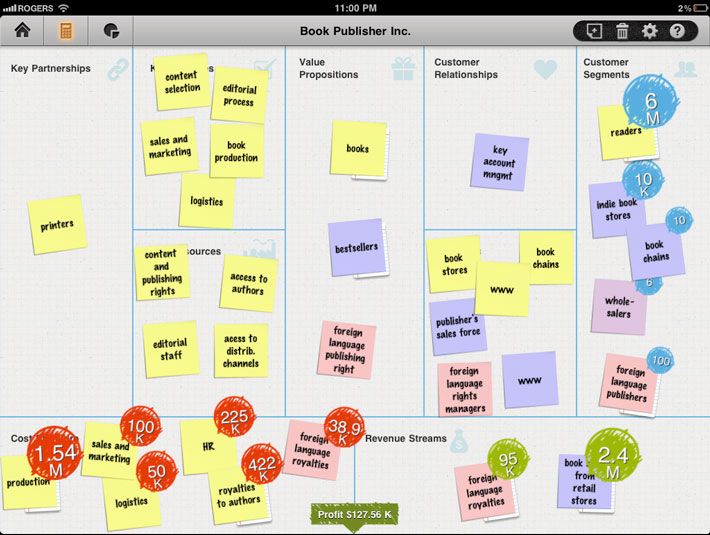
Business Model Canvas: A Simple Tool For Designing Innovative Business Models
Do you have any concerns about whether it’s worth it to build this canvas? We have predicted that you may struggle again some hesitations, this is why we present the list of business model canvas’ purposes:
- It saves your time: you don’t need to spend days and nights developing a 100-pages business plan;
- It helps to clarify your goals: having your canvas ready, you may notice some possible imperfections or issues you haven’t recognized before;
- It improves your relations with a team: your teammates can understand your goals and plans in a better way holding the canvas in their hands;
- It helps to establish fruitful business relations: expose your business model canvas to your potential partners and investors and let them understand your app in a better way;
- It allows attracting initial investments: actually, this is a consequence of a previous point;
- It is a chance to analyze and test the idea: setting everything up on a canvas, you automatically analyze your plan and discover ways on how to check its viability.
Business model canvas is easy to modify, and you can build as many versions as you need before getting the best result.
3. What are the essential elements of a business model canvas?

Nine Components Of Business Model Canvas
Add the following segments to your canvas and take as many benefits as possible out of it:
Customer segment
This is the thing you need to start with, Describe customer persona, define customer’s motivations, problems, fears etc. Depending on what the purposes of your app are, you may need to fill several custom segments. The point is to find ways to look at your product with your potential customers’ eyes.
Value proposition
Now, answer the following questions:
- What issues your app can address?
- How can it assist your customers?
- What needs it is able to satisfy?
- What is the reason your customers will pay for your app?
Make sure your app is going to be:
- Unique;
- User-oriented;
- Attractive;
- Affordable;
- Convenient.
Sales channels
How would you like to reach out to your potential customers? Where will your potential clients find your app? You may either develop your channels or build cooperation with specialists or companies who can do it for you.
We’d recommend to start selling your app on your company’s website and extend the market when rolling out your app to the Play Market or App Store. After these channels’ establishment, you can proceed with employing affiliate programs, cross-selling partnership, Google Adsense etc.
Customer Relations
Here, you need to define 3 cornerstones of your relations with customers, both former and potential.
Customer Acquisition
Describe what marketing or advertising channels and approaches you will implement to meet your app’s first users.
Making them stay
Once you’ve acquired customers, a new challenge appears: how to keep them? Here, professional customer support built from scratch, special offers and catchy discounts may be helpful.
Growing a base
On the next stage of the circle, you should attract new users and engage the former ones.
Revenue and finances
Here, you should clarify the following things:
- Business strategy to capture the value;
- The most effective ways to monetize your app;
- Channels of financial income;
- Ways to increase revenue.
The list of key resources
Put down the list of resources you need to start and grow your business. There are 4 main types of them:
- Physical resources include your office, equipment, hardware and software, devices and network;
- Human resources are the specialists you work with;
- Intellectual resources include knowledge and skills your teammates possess, as well as patents and copyrights;
- Financial resources are built with investments and credits you need for the start.
Key activities
In this section, describe all the steps you need to take to make your business model work:
- Add information about consultation services and communication channels;
- Talking about the production stage, define your focus. Is it a high-quality solution? Or an app delivered as fast as possible?
- Analyze the activities depending on each particular platform or network your app is spread through.
Business partners
Here, present the information about the key partners you plan to build cooperation with.
Cost structure
Shortlist the things you need to invest in and write down the most important of them. These may be rent, servers and clouds, employees’ salaries etc.
4. How do the most popular businesses design their canvases?
Take a look at canvases developed by well-known companies:
Twitter business model canvas
Facebook business model canvas
Google business model canvas
In conclusion
Today, together with the data presented above, we have shown you that:
- Business model canvas development is essential for your company’s organic growth;
- It consists of the following critical elements: customer segment, value proposition, sales channels, customer relations, financial questions, key resources and activities, business partners, basic cost description;
- World leaders like Twitter, Facebook and Google have detailed canvases with overviews of all the needed elements.
You can deepen your knowledge and develop own tactics for canvas development after one look at the tables provided above. This is vital for a successful start and further growth of a prominent business. Don’t underestimate it and devote some time and some brainstorming to business model canvas development.

